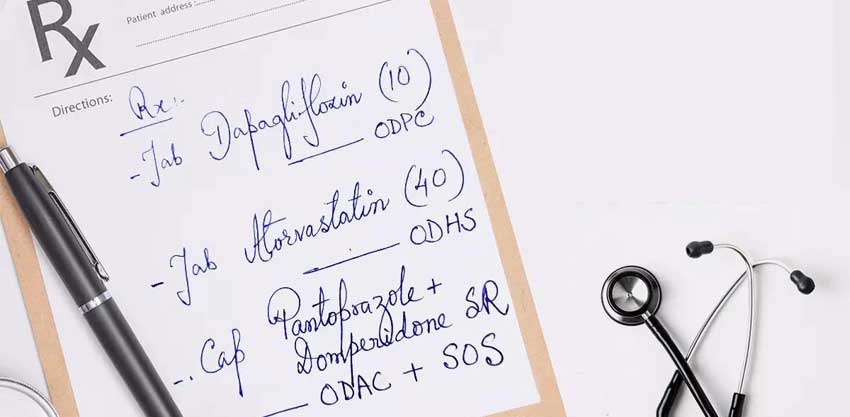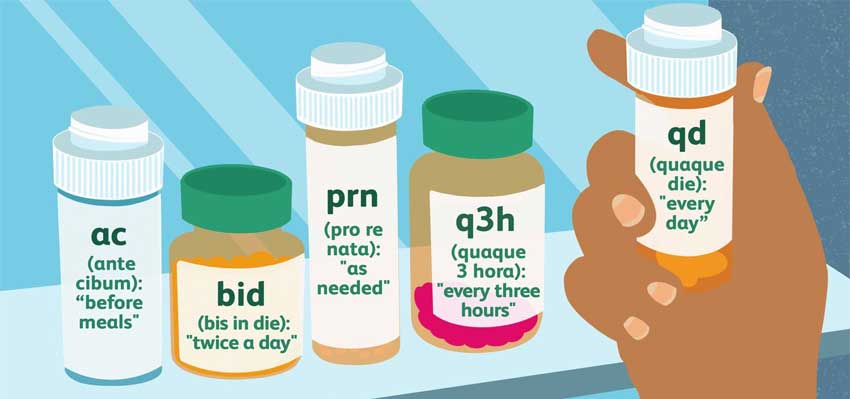A doctor’s prescription is a written or electronic document that outlines the specific medication, dosage, and administration instructions that a healthcare provider prescribes to a patient.
Getting the appropriate drug and dose for a patient’s condition is the main goal of a doctor’s prescription.
Doctor prescriptions also serve as legal documentation for pharmacists and patients. Without a doctor’s prescription, patients may receive the wrong medication or incorrect dosage, which can result in negative health outcomes.

The value of a doctor’s prescription depends on its capacity to give patients and pharmacists clear, unambiguous instructions.
Doctor prescriptions help prevent medication errors and ensure patient safety. Additionally, doctor prescriptions provide a record of the prescribed medication, which can be used to monitor patient progress and ensure continuity of care between healthcare providers.
Ultimately, the delivery of secure and efficient medical care depends heavily on doctor prescriptions.
Consider reading about odhs meaning in prescription here.
Prescription Format
The format of a doctor’s prescription typically includes the following components:
- Patient information (name, age, weight, and other relevant information)
- Date of prescription
- Medication name
- Dosage instructions (how much and how often to take the medication)
- Route of administration (how the medication should be taken, e.g. orally, topically)
- Duration of medication (how long the medication should be taken)
- Doctor’s signature and contact information
Significance of Doctor Medical Prescription
When you visit a doctor, one of the most important outcomes is receiving a medical prescription. A medical prescription serves as a crucial document that outlines the medications, dosages, and instructions necessary for your treatment.
It is essential for both the patient and the pharmacist to understand the prescription clearly and accurately.
- Clarity and Legibility: This clarity is crucial to prevent misinterpretation or confusion, reducing the risk of medication errors. A clear prescription format ensures that all information, such as the medication name, dosage, frequency, and route of administration, can be easily read and understood.
- Complete Patient information: This typically includes the patient’s name, age, gender, and contact information. The inclusion of this information is vital to prevent any mix-ups or errors, especially in cases where patients have similar names or when prescriptions are stored electronically.
- Accurate Medication Details: By clearly outlining these details, doctors help pharmacists dispense the correct medication and guide patients on proper usage.
- Allergies and Contradictions: This information alerts the pharmacist to potential interactions or adverse reactions between medications and helps prevent any harm to the patient
- Signature and Contact Information: The signature provides authentication and indicates that the prescription is legitimate. Additionally, the contact information allows pharmacists or other healthcare professionals to reach out to the prescribing doctor for clarifications or further information if necessary.
There are two main types of prescriptions: electronic and handwritten Direct transmission of electronic prescriptions takes place between the computer of the healthcare practitioner and the computer of the pharmacy.

The patient must submit to the chemist any handwritten prescriptions that the doctor has written. Depending on the nation and location, several prescription formats are required by law. In general, prescriptions must include certain information to be considered valid.
For example, in the United States, prescriptions must include the patient’s name, medication name, dosage, and duration of treatment. Medical professionals may occasionally be obliged to generate prescriptions using particular forms or computerized tools.
Failing to meet legal requirements for prescription format can result in disciplinary action for healthcare providers and can put patients at risk for medication errors.
Also read about pcod diet chart here.
Meaning of Prescription
The purpose of a doctor’s prescription is to provide specific instructions to patients on how to take medication prescribed by a healthcare provider.
Prescriptions help patients by providing clear and concise information about their medication, including dosage, timing, and administration route.

This information helps patients take their medication safely and effectively, reducing the risk of medication errors and improving treatment outcomes.
Also, prescriptions assist medical professionals in keeping track of patients’ development and modifying their treatment plans as necessary.
Prescriptions are necessary for several reasons. First, they ensure that patients receive the correct medication and dosage for their specific medical condition.
Without a prescription, patients may take the wrong medication or incorrect dosage, which can lead to negative health outcomes. Additionally, prescriptions help ensure that patients are taking medication safely and effectively by providing clear instructions for administration.
Prescriptions also serve as legal documentation for pharmacists and patients, providing a record of the prescribed medication and dosage.
Overall, prescriptions are an essential part of medical treatment and are necessary for ensuring patient safety and effective treatment outcomes.
Consider reading about best vitamin c serum in india here.
Medical Prescription
Medical prescriptions are prescriptions that are used to treat medical conditions or diseases. They differ from other types of prescriptions, such as prescriptions for eyeglasses or hearing aids, which are not used to treat medical conditions.
Medical prescriptions are written by healthcare providers, such as doctors or nurse practitioners, and provide specific instructions on how to take medication for a medical condition.
Medical prescriptions are used in treatment to help manage symptoms, cure or prevent diseases, and improve overall health outcomes.
For instance, a doctor could recommend insulin to treat diabetes or antibiotics to treat a bacterial infection. Chronic illnesses like high blood pressure or heart disease can also be managed with the use of prescription medications.
Also read about the contact lenses best brand in india here.
There are many different types of medications that doctors may prescribe to treat medical conditions.
Some common medications include:
- Analgesics (pain relievers) such as acetaminophen or ibuprofen
- Antibiotics such as penicillin or amoxicillin
- Antidepressants such as fluoxetine or sertraline
- Antihistamines such as loratadine or diphenhydramine
- Antipsychotics such as risperidone or olanzapine
- Diuretics such as furosemide or hydrochlorothiazide
- Insulin for diabetes management
- Statins such as atorvastatin or simvastatin for managing high cholesterol
Doctor Prescription Format
When creating a prescription, doctors typically include the following information:
- Patient information: Name, age, weight, and other relevant information.
- Medication information: Name, dosage, strength, and administration instructions.
- Administration route: How the medication should be taken (e.g., orally, topically, subcutaneously).
- Duration of medication: How long the medication should be taken?
- Doctor’s information: Signature, name, and contact information.
Doctors choose medications for their patients based on several factors, including the patient’s medical history, current health status, and any allergies or sensitivities they may have.
Doctors may also consider the medication’s potential side effects, drug interactions, and cost. In some cases, doctors may consult with other healthcare providers or specialists to determine the best course of treatment.
Also read about best eye protection glasses for computer users here.
To understand doctor prescriptions, patients can take the following steps:
- Ask questions: Patients should not be afraid to ask their healthcare provider questions about their prescriptions, including how to take the medication and what to do if they experience side effects.
- Read the label: Patients should carefully read the label on their medication, which should provide information about the medication’s dosage, administration, and potential side effects.
- Follow instructions: Patients should follow their doctor’s instructions for taking medication and should not alter the dosage or administration without consulting their healthcare provider.
- Keep a record: Patients should keep a record of their prescriptions, including the medication name, dosage, and administration instructions, in case they need to refer to the information later.
Doctor Prescription Format Reader
Some common abbreviations used in prescriptions include:
BDS , TDS, HS are Latin abbreviations used in prescriptions.
- BDS means twice a day.
- TDS -thrice a day
- HS- at bedtime
Other common abbreviations are
- OD – once a day
- a.c-before meals
- P.c-after meals
Resources for understanding prescription terminology include:
- Pharmacist: Pharmacists are experts in medication and can answer questions about prescription terminology and medication use.
- Online resources: There are many online resources available to help patients understand prescription terminology, including websites and apps that provide information about medication use and side effects.
- Patient advocacy groups: Patient advocacy groups can provide support and resources to help patients better understand their prescriptions and medical conditions.
Conclusion
Doctor prescriptions are a vital part of healthcare, providing patients with important information about their medication, including the name, dosage, and administration instructions. Patients can control their medical issues and enhance their general health and well-being with the use of prescription medications.
2 comments
This is really an awesome website where i can get all the medical related information in just few clicks. I just search my query in the search box and i am done as i did with doctor’s medical prescription format and how to understand the same and landed here. This is superb.
All patients should know about the medical prescription given by the doctor because it tells us when the tablet needs to be consumed. this medical description given by the doctor contains some terms which we need to understand that tell us a lot about the time when to take the medicine.